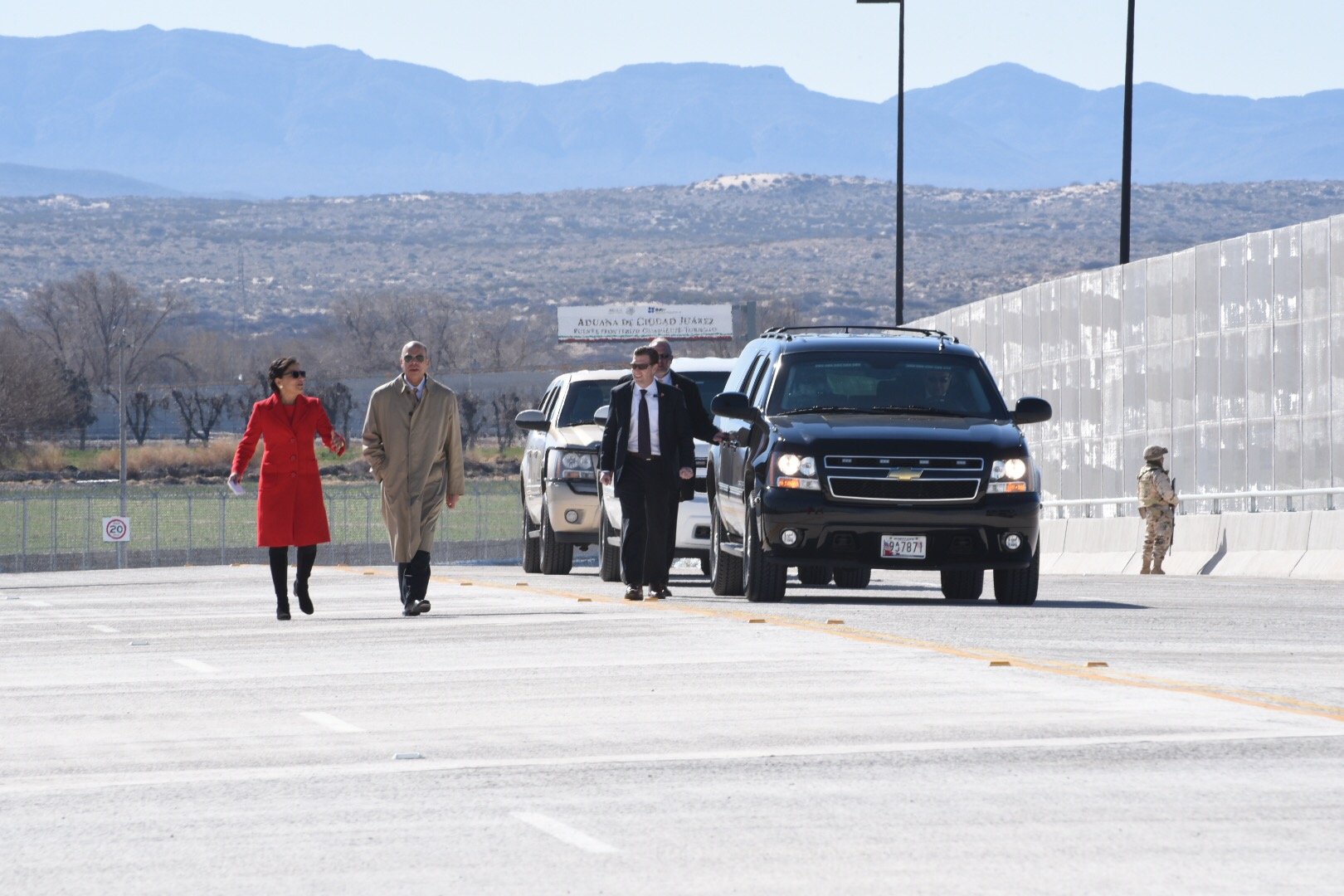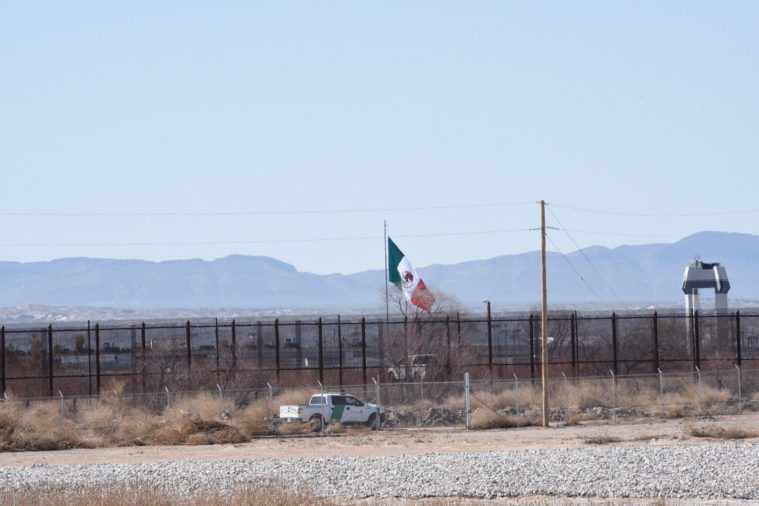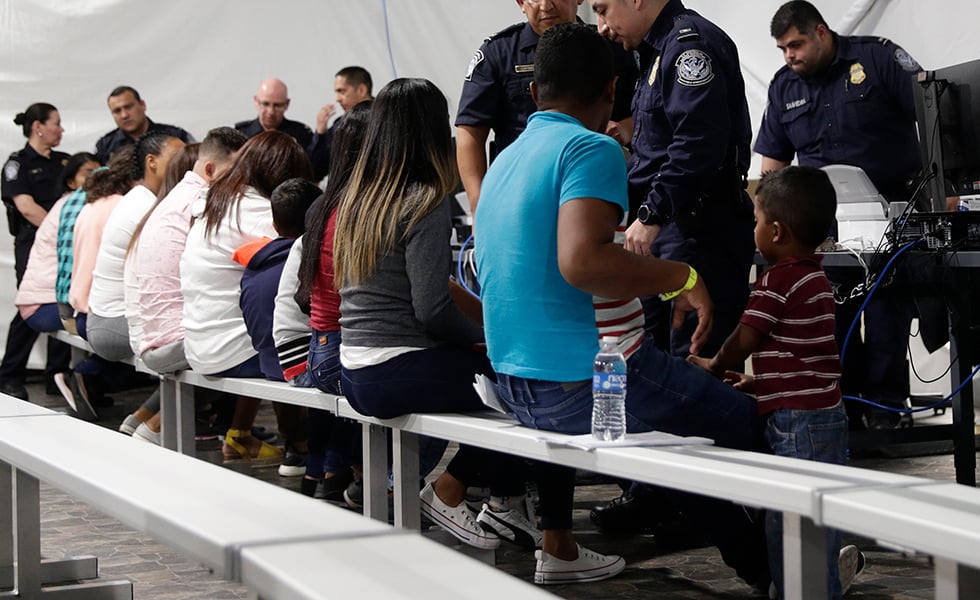
A Bridge Over Troubled Water
Problems plague the Tornillo-Guadalupe Port of Entry and International Bridge after federal and local governments invested millions in the project.

A version of this story ran in the December 2017 issue.
Above: Former Homeland Security and Commerce officials walk across the Tornillo-Guadalupe Port of Entry and International Bridge in 2016.
In February 2016, Texas’ newest and largest port of entry opened to great fanfare 35 miles east of El Paso. The brand-new, six-lane toll bridge between Guadalupe, Mexico, and Tornillo, Texas, was supposed to spur economic revitalization in one of the poorest regions of the state.
But the commercial traffic from Mexico that county and federal officials expected never materialized. Since the bridge opened, just five shipments in excess of $2,500 have passed through the port, according to the El Paso Times. Due to lack of demand, U.S. Customs and Border Protection diverted its customs inspectors to other bridges and closed the northbound lane designated for commercial traffic little more than a year after the bridge’s opening.
County Commissioner Vince Perez, who represents the precinct where the bridge was built, said El Paso County spent more than $42 million in bond money to finance its construction as well as a highway that connects the port to Interstate 10. The federal government chipped in approximately $93 million. The county planned to generate revenue from tolling commercial traffic, but realized that with so few crossings it would be what Perez called “an operational loss.”
“The violence has subsided somewhat but there are still the lingering impacts.”
Perez said he was in high school when his predecessors decided in 1997 to upgrade the bridge. They thought both sides of the border would soon be teeming with commercial activity. What they didn’t account for, Perez said, was the drug violence in Mexico. From 2008 to 2012, the Juarez Valley, which came to be known as the “Valley of Death,” had one of the highest murder rates in the world. Some Juarez Valley residents who fled to Texas claim they were targeted because of their land’s value and close proximity to the border.
“A lot has occurred in 20 years,” Perez said. “Things nobody could have imagined.”

Perez said the communities in Mexico were “pretty much decimated. The violence was higher in the Juarez Valley than it was in Ciudad Juarez,” he said. “The violence has subsided somewhat but there are still the lingering impacts.”
Another issue, Perez said, is that Mexico still hasn’t built the 20-mile highway connecting the bridge with the Chihuahua-Juarez highway, which would allow commercial truckers to conveniently bypass Ciudad Juarez. “Right now I don’t think it’s viable for a lot of truckers or maquilas to use the port of entry,” said Perez.
A Chihuahua state official recently told the El Paso Times that the connector project is currently under review. The slow pace could also have something to do with corruption investigations roiling the Chihuahua state government. Governor Javier Corral recently launched a new anti-corruption program called “Justice for Chihuahua” and declared Cesar Duarte, the state’s governor from 2010 to 2016, a “fugitive from justice.” Duarte is under investigation by Mexico’s tax service for money laundering and a “misuse of funds” and has, according to Mexican media reports, fled to El Paso.
Most likely, he too chose to use another bridge.


